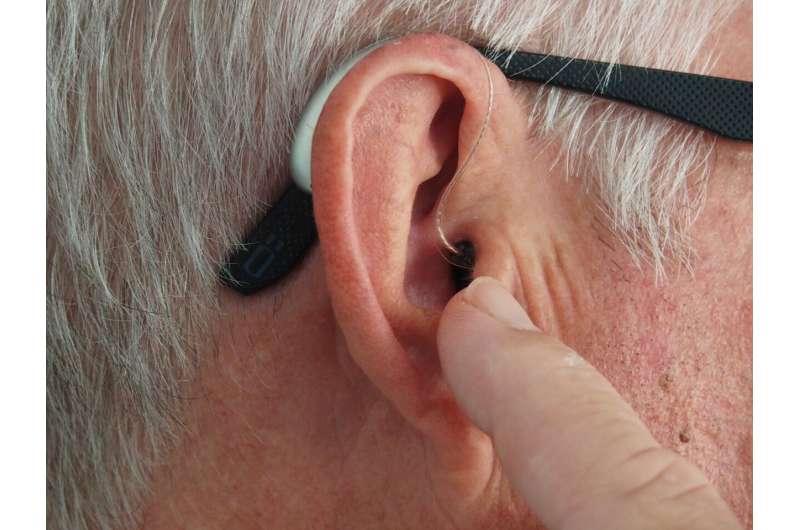Credit: Unsplash/CC0 Public Domain
Evan Nix, MD, and colleagues in the division of Otology/Neurotology and Skull Base Surgery and the division of Auditory Research in the UNC Department of Otolaryngology/Head & Neck Surgery have been studying the functional acoustic hearing regions of cochlear implant recipients.
In their latest study, they found that approximately 60% of cochlear implant recipients with hearing preservation had one or more electrode contacts in the functional acoustic hearing region.
For those who listened with an electric-acoustic stimulation (EAS) device, there was a significant association between speech understanding in noise and proximity of the electrode array to the functional acoustic hearing region in either the basal or apical direction.
These data have clinical implications for electrode array selection for cochlear implant candidates with functional acoustic hearing and for mapping of the EAS device.
The data support selection of an electrode array that will be placed at the upper edge of the functional hearing region to avoid electric on acoustic interference. Also, the placement of the electrode array for an individual patient could be incorporated into the personalized mapping of the EAS device.
The study is published in the journal Otology & Neurotology.
More information: Evan P. Nix et al, Incidence of Cochlear Implant Electrode Contacts in the Functional Acoustic Hearing Region and the Influence on Speech Recognition with Electric–Acoustic Stimulation, Otology & Neurotology (2023). DOI: 10.1097/MAO.0000000000004021























